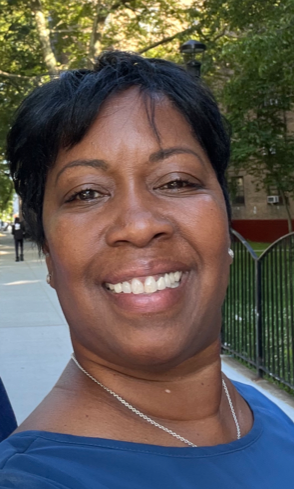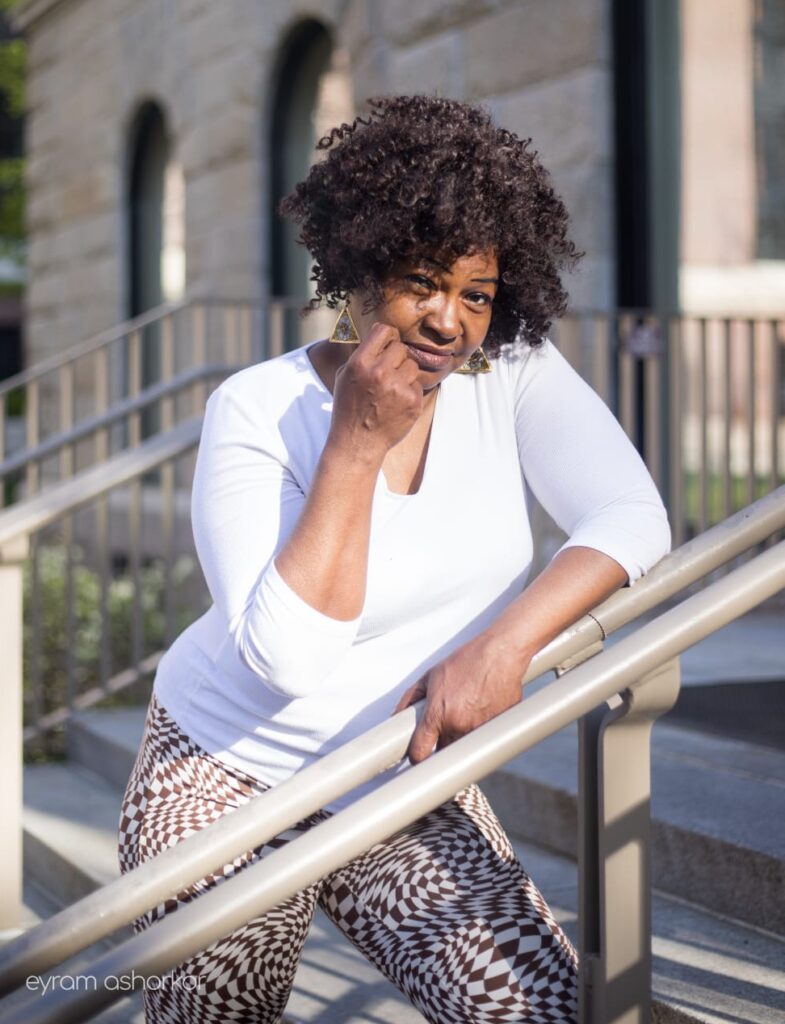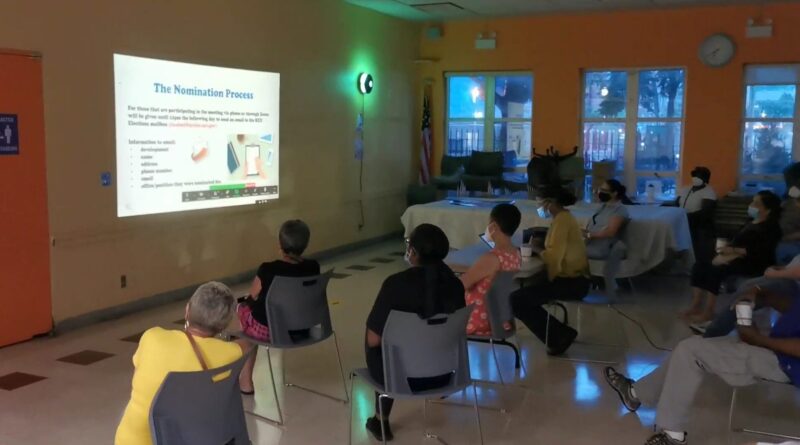193 NYCHA Resident Association Elections Held Over the Past Year
NYCHA residents at 193 developments across the city have new resident association presidents and boards. The boards are tasked with serving their fellow residents, hosting events and connecting residents to resources, and collaborating with NYCHA staff at every level; they ensure residents are part of decision-making at their developments and in the Authority.
From July 2021 to July 2022, NYCHA’s Resident Engagement Department (RED) hosted resident association elections at developments across the city and certified 193 resident association boards, which include new and existing boards. There are currently 230 resident associations.
“It was certainly a task to conduct these elections,” said Mirella Laure, Special Projects Coordinator for RED. “Logistically, we plan by borough for every election, which allows us to assign staff to sites by where folks live or is convenient. We were able to have an onsite facilitator as well as staff to help with the virtual aspect. As an example, on November 8, 2021, we had 5 elections in Queens and 17 sites in Manhattan; on November 9, we had 16 sites in the Bronx; on November 10, we had 21 sites in Brooklyn. We had a lot of help and were able to use all our staff within RED, within Community Engagement and Partnerships, and none of this would be possible without the help of the City Cleanup Corps staff.”
Resident councils are led by an executive board that includes a president, vice president, secretary, treasurer, and sergeant-at-arms at minimum. Additionally, residents are represented at the citywide level by the Citywide Council of Presidents (CCOP).
Each of the newly elected board members had to meet eligibility requirements and be in good standing to run for and hold the position.
Resident associations can hold elections facilitated by NYCHA or through a third-party facilitator; the majority are facilitated by NYCHA. Due to the pandemic, RED began holding election meetings in a hybrid virtual and in-person model, promoting accessibility and safety. Electronic voting allowed eligible residents (18 and older and on the lease) to vote on any device with internet access, and in-person voting was also held onsite at the developments. After the election window closed, RED staff publicly counted in person and electronic votes, a process residents could view virtually or in person.
Once the results were finalized, the board received access to Tenant Participation Activity (TPA) funds, a commercial card, office space, and other resources needed to function as a board and serve their community.
Learn more about resident association elections here: https://www1.nyc.gov/site/nycha/residents/resident-council-elections.page
Meet three newly elected resident association presidents:
Veronica Nieves is the president of Manhattanville Houses. She has lived at the development since 2016. She’s a single mom of four, and her two youngest children live with her. During the pandemic, she began volunteering at the development and ultimately became vice president of the resident association board.
When the former president Emma Barricelli resigned and no one else stepped up to run for president, Ms. Nieves decided to run. “We have such a big community, and I didn’t want the funds to go to waste and not have a board for us.”
Though she’s a new president, she has someone on her team to show her the ropes: Ms. Barricelli now serves on the board as vice president. “Everything I know, I know because of her; she teaches me a lot. As our former president, she had so much love for what she was doing and how she helped the residents.”
Ms. Nieves has many goals as president: she wants to establish more programs for seniors and children and host more events and programs where residents can meet their neighbors. “I know people who’ve lived in the community for years, but they don’t know residents from other buildings. My goal is to build a family-oriented community.”
Corinne Woods-Haynes is the president of Queensbridge Houses. She has been part of the community her entire life. She grew up at Queensbridge and raised three children there with her husband.

“I’ve been doing volunteer work in the community for years. I was always present with young people because of my kids; it’s always been important for me to pour into who I’m connected to. I got my first job as a parent in Jacob Riis Neighborhood Settlement House because I was volunteering wherever my kids participated, and then I was offered a job.”
Ms. Woods-Haynes currently works for Queens Public Library as an employment counselor and previously worked on afterschool programming and homework help at the library. She is excited about the opportunity to support residents through both the library and the resident association.
Ms. Woods-Haynes had been a member of the resident association for years and when she heard about the elections, she decided to run. She put together a campaign for her candidacy. She had a barbecue, a team of volunteers, and flyers. She walked around the development and talked with her fellow residents about some of her ideas to address lack of parking and language access issues. “I created a logo, ‘One Queensbridge,’ because I want us to act as one community – the Spanish speakers, Chinese speakers, Bengali speakers. People were having separate community meetings within their own communities. You can’t feel welcomed in your community if you cannot read the information posted in the language that you speak, which is why I believe we should operate as one. When we came into office in February, we had our first meeting in March, and we had a Chinese translator.”
She’s working with partners to set up a summer media arts program for young people. “This is a way for us to engage with young people. We can continue to engage them with afterschool programming. We want young people to mirror what we do in the association and have their own youth council, and it’ll be limitless after that because youth attract youth.”
“We want to reestablish community in our community. What that means for me is that we strengthen the partnerships in our community, we create more of a sense of ownership in our community – in the development we live in – so that we can reestablish empowerment among the residents. We want to create synergy between NYCHA and the residents instead of adversity. We want residents to be the agents of change and ensure that residents always have a seat at the table; no project should be done without having a roundtable discussion with residents. We are looking to empower the residents of Queensbridge Houses to reach their greatest potential by providing access to resources, programs, and services with community partners.”

Karen Blondel is the president of Red Hook West Houses. She has been a community member for more than 30 years and is actively engaged in many of the issues she cares about most: the Red Hook community, public housing, climate change and environmental justice, and more.
“I wanted to run for election because I wanted to modernize the resident association in this development. I would only see about 20 people going to meetings when we have 1,400 units. I want to build capacity and engage residents with the information I knew.”
Ms. Blondel has a lot of goals she wants to accomplish, furthering her own work in the community. “I want to have a lot of conversations with residents so that they understand their environment and can do things to safeguard themselves. Since the pandemic, we’ve had a lot of new warehouses open in the neighborhood, Amazon and others, and we have additional trucks, which means additional air pollution. If we have a lot of truck traffic in the mornings and you have asthma, maybe you can wait to run your errands until the afternoon – so it’s not only to elevate their voices but also to let them know how to protect themselves.”
In addition to engaging young residents, she wants to ensure residents are knowledgeable about housing preservation initiatives like the Public Housing Preservation Trust and PACT/RAD and that they have a seat at the table for all projects involving their developments.
Ms. Blondel is the founder of the Public Housing Civic Association, a nonprofit she launched in 2020 to give public housing residents a voice related to addressing issues in the built environment. She recently graduated from the Loeb Fellowship at Harvard’s Graduate School of Design, which provides leaders in the built and natural environment a year at Harvard to expand their resources and knowledge so they can continue to be leaders in the field. She is also an alumnus of the AmeriCorps Vista program, an experience that activated her civic engagement. She has worked with NYCHA residents in various capacities, including an initiative regarding Gowanus Canal remediation work.
She wants to share her knowledge and expertise but also said, “Being a resident leader is not about likership, it’s about leadership and it’s about delegating to other leaders. I want to hear from the residents. I might have expertise in the built environment and engineering, while someone else might have expertise on gun violence or workforce development. We can work together and be a model for other developments.”
Featured photo caption: Holmes Towers residents attending a general election meeting to learn more about the resident association election process.

